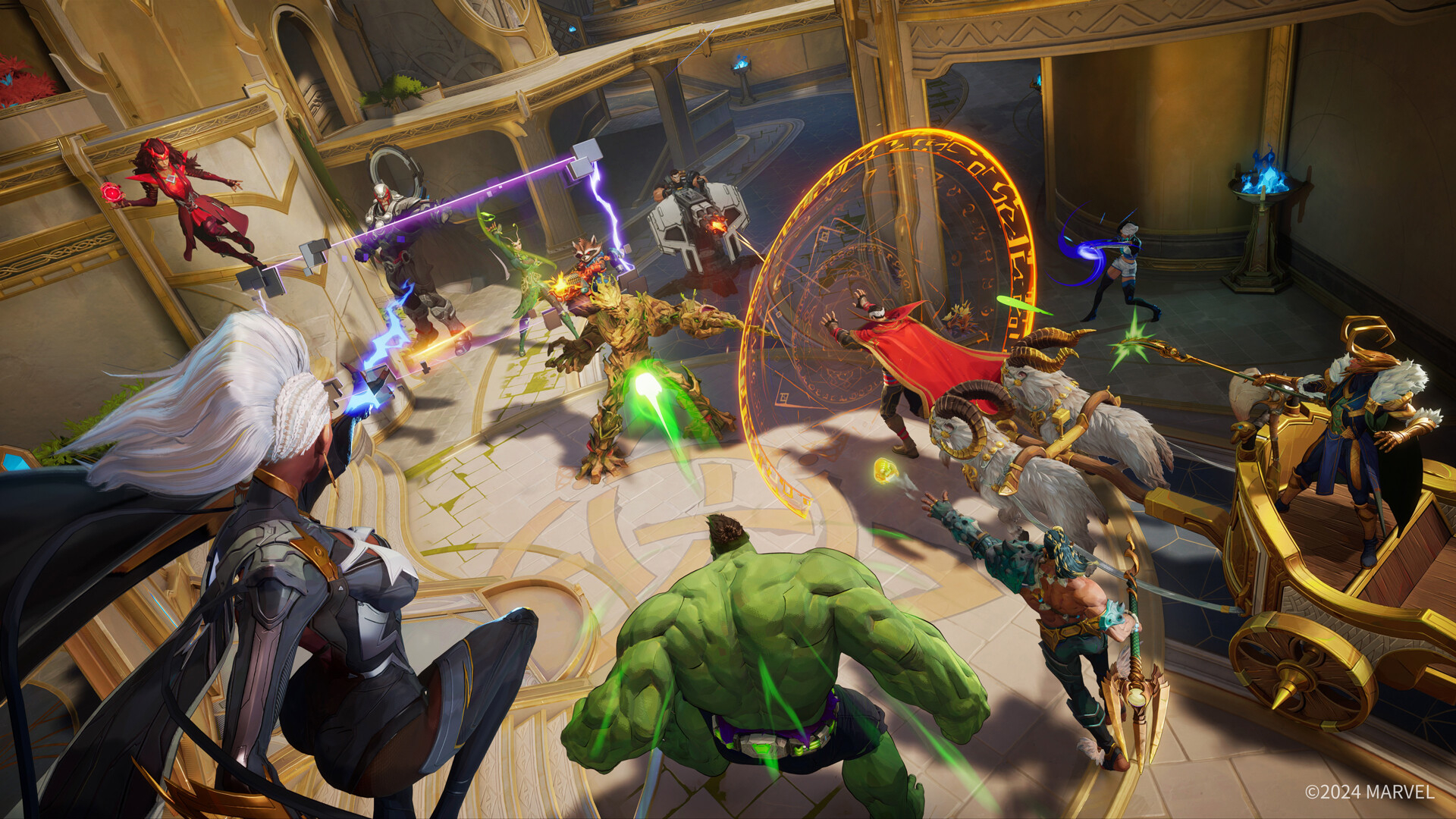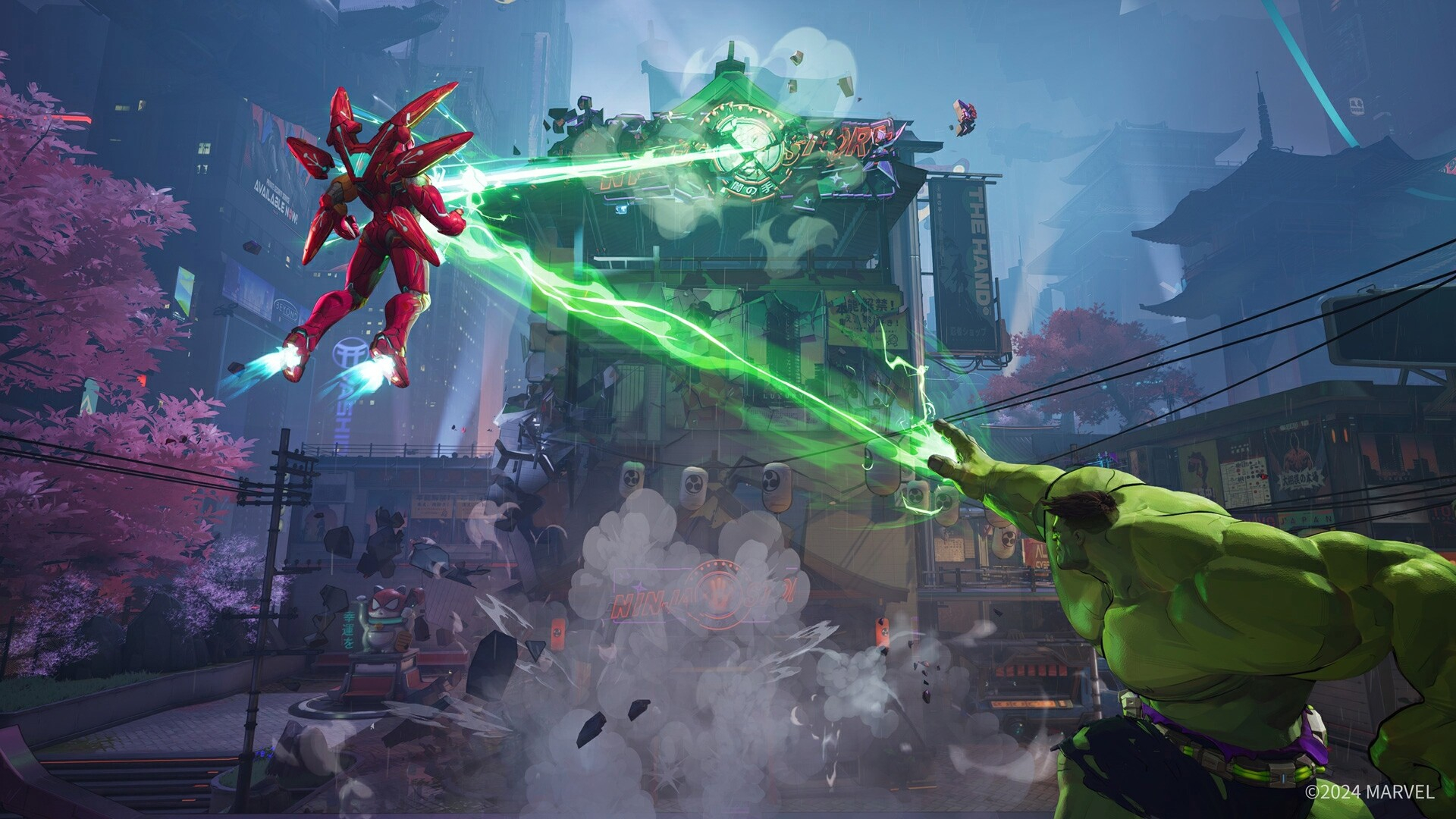The Marvel Rivals team on how to build a hero - and make them powerful
Hero worship

In the crowded online hero shooter landscape, developer NetEase and Marvel Rivals may be able to achieve what Sony and Concord could not: the creation of a true Overwatch rival.
Of course, in a market dominated by Blizzard’s decade-spanning success story, there are still plenty of titles competing to take its place. Apex Legends has found much success in this field, particularly in Asia, while Valve recently gained a footing by letting internet speculation fuel Deadlock’s beta. NetEase faces more of an uphill battle. The Marvel name may hold some clout, but it has been strong word-of-mouth from alpha and beta tests that have turned initial intrigue at an IP hero shooter into genuine excitement.
But can this pre-launch interest translate into a large dedicated player base? A few days before Tokyo Game Show 2024, I had the chance to sit down with the developers to discuss their design philosophy and any development challenges they have faced.
With great power

“We can only succeed by having our own specialty within this big genre,” explains Guangyun Chen, lead game designer of Marvel Rivals. “We define ourselves as a superhero PVP game, so we want to provide an authentic superhero experience where you play and act as these heroes. [To keep it engaging] we’ll have our evolving seasons and new storylines which will bring new heroes, new hero team-up skills, changes to some maps, and possibly even changes to the gameplay. We want to make sure the player can experience new stuff continuously and keep feeling refreshed.”
While much of Marvel Rivals is exactly what you would expect from the genre, with two teams of heroes that duke it out for objectives on a range of maps, the abilities of these heroes are where the team hopes to differentiate their game from the competition. Many characters have powers that let them zip through the environment or even fly. Finding cover is dynamic thanks to destructible environments that ensure no two games feel exactly alike. Team-up abilities occur when allied heroes (such as the Spider characters) are picked together, bringing some unique attacks that could give well-coordinated teams an edge.
If superhero multiverse films themselves have at times been bogged down by their own lore, the team here wants to use it to expand and bring purpose to each battle. They have crafted their own multiverse, which gives them the freedom to use variations on characters that would not have met in the comics, and dive into lesser-known picks in the roster.
The recently revealed Psylocke was a character chosen for her unique abilities as a katana wielder and for her agility. Her design is based on Peach Momoko’s comic interpretation of the hero, with the artist even being brought on to liaise on the overall look further.
Get daily insight, inspiration and deals in your inbox
Sign up for breaking news, reviews, opinion, top tech deals, and more.
Psylocke-ing in new faces

When it comes to creating new characters, the team insisted it was about making things fun, varied, and visually interesting. As Chen explains: “we’re a matchmaking game, so our first priority is making sure that our heroes add to the dynamic of the game. But beyond that, we pick heroes for two reasons: because they’re popular and people will be familiar with them, like your Spider-Man or your Captain America. Then, we want to include some heroes that will be less known that will have their own specialties, and that can demonstrate the diversity of this universe.
“We pick voice actors too, based on how we design these characters. For Spider-Man, he already has a famous voice actor in Yuri Lowenthal, so we invited him to voice the character with no hesitation. When it comes to heroes whose presence in the game is more diverse or are mainly found in formats like the comics and not other media, like Psylocke, we take a different approach. With her, we were wanting to find someone who could speak both Japanese and English. We even think beyond the game too with how fans can interact with voice actors, such as how they can have a presence at shows like Comic Con.”
The more we spoke, the more the team placed the emphasis away from esports and towards more casual elements. The goal is to ensure the game is fun for all audiences and not only at the highest level, which makes sense. Beyond the ubiquity of these characters being more likely to bring in casual players, no game can solely prop up its success entirely on the back of competitive stardom. Overwatch has found an audience even as its own ambitious esports plans have consistently fumbled, and Fortnite is bigger than ever even as its competitive scene has shrunk.
“We have a statistics model that helps us to deal with the balancing problem. So each character has a basic number of settings for their power and skills. We will run tons of tests to check whether these numbers need to be adjusted, and we even have different kinds of tests. We ran tests to check the balance for entry-level players, and we ran tests where we got super good players in our team to play against pro players so we know what's going to happen when pro players play with these settings. Based on this we will adjust the basic numbers to finally reach the balance between each hero to ensure everyone has the best balance and time while playing.”
Technical awareness

It was while speaking to the technical team later on in our session that I came to truly appreciate just how much work had been done to innovate technically and bring something new to the genre. Ensuring a fully destructive environment that will accurately sync between players online has required lots of trial and error.
As Weikang Ruan, lead technical designer on the game, says: “we had to split the destructive environments into two parts [to ensure it would function even at high-latency]. To recognize whether a piece of a building has been destroyed and can be attacked through, the first part of the recognition system is done entirely on-client.
"For small items like windows, doors, those are recognized and destroyed entirely on the client side, so the server won’t deal with this and it reduces the data being sent. For other areas, if we destroy a part of a wall and that wall now has a hole, the server only has to know whether this piece is present or not and sync that data, while the actual destruction effect occurs locally. [By simplifying how the server recognizes destruction within the client] we worked to make sure this would sync perfectly even at over 100 ping, so it should be good for all players.”
It was so challenging for us to optimize for the Series S
Weikang Ruan, lead technical designer
Coupled with the challenge of realizing powers like that of Doctor Strange, who can fire projectiles through the portals he creates throughout a level, this places a lot of technical strain on the hardware. The team noted particular challenges balancing for the Xbox Series S, due to its lower GPU power and memory.
In Ruan’s words, “it was so challenging for us to optimize for the Series S, and we’d heard the same from many other developers. Destructible environments increase our memory usage quite a bit, with about 200-300MB used on this, which may seem small but is a real challenge for the hardware. However it is a popular device, and it sets us a lower baseline for next-generation development to adapt our game which brings better performance for the player.”
Will Marvel Rivals stick around? Perhaps, if the constant addition of new heroes and evolving seasons ensure a constantly fresh experience. That being said, the first hurdle for any live service success has been cleared. People are listening, people are excited, and the game is entertaining.
This is where the fun begins...
You might also like...
- Get the latest Marvel Rival codes to add some exclusive rewards and items to your game
- Mario & Luigi: Brothership brings Nintendo’s smashing siblings closer than ever - but Luigi still plays second fiddle
- Sid Meier's Civilization 7 developer discusses building “the best looking tabletop game on the planet”
Alicia is a freelance journalist based in Japan writing regularly for TechRadar Gaming. They’ve handled features, reviews, and more about film, TV, anime, gaming, and more with a specialty on Japan, publishing for outlets like Crunchyroll, GamesRadar, UploadVR, gamesindustry.biz, and more. After a degree studying Japanese at Durham University, they moved to Japan in 2022 where they’ve been living the high life in Tokyo ever since. When they’re not lost in the swirling metropolis they’re writing about games and their experiences in the country, providing their unique perspective from the ground. Beyond work, they love to take in art and culture by attending exhibitions, watching movies, meeting friends for alcohol and karaoke, or going to the theater multiple times a month to watch musicals including the all-female Japanese theater troupe Takarazuka Revue. These cross-cultural experiences have intensely shaped their worldview, having just as much of an impact on their judgment of the latest games and tech as the experiences that first made them interested in moving to their new home: Kingdom Hearts, NieR, and other Japanese RPGs, as well as adorable anime girls.